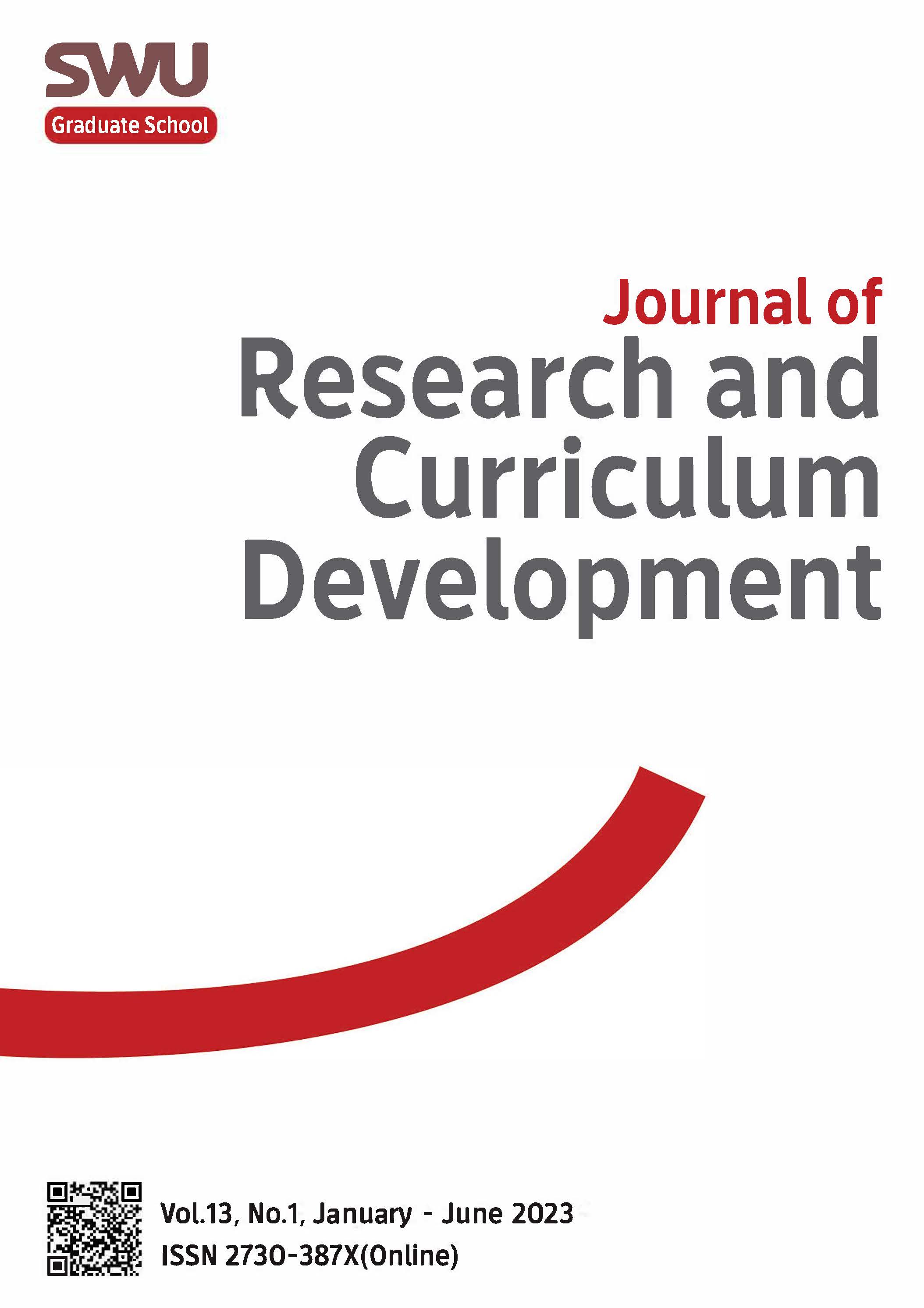Development of Science Learning Achievement and Problem-Solving Thinking by STEM Education Management with Engineering Design Process for Grade Six Students
Keywords:
science learning achievement, problem-solving thinking, STEM educationAbstract
This research aimed to compare the science learning achievement of students before and after learning through STEM education management with Engineering is Elementary, in order to compare the problem-solving and thinking ability of students before and after learning through STEM education management with Engineering is Elementary, and studying the satisfaction of the students with STEM education management with Engineering is Elementary. The research sample consisted of 29 Grade Six students studying in the first semester of the 2022 academic year, obtained by cluster sampling. The research instruments were lesson plans, achievement tests, problem-solving thinking tests, and a satisfaction questionnaire. The statistics used in data analysis included mean, standard deviation, and a dependent t-test. The results showed that the science learning achievement and problem-solving and thinking abilities of the students after learning through STEM education management with Engineering is Elementary are higher than that of before learning with the statistical significance at a level of .05. Overall, the students were satisfied with the STEM education management with Engineering is Elementary at a high level.
References
Ban Sa Nam Som School. (2020). Annual Report. Nakhon Pathom: Ban Sa Nam Som School.
Cunningham, P. R. Mott, M. S. & Hunt, A-B. (2018). Facilitating an elementary engineering design process module. School Science and Mathematics, 118(1-2), 53-60.
Kamolchart, K. (2019). Development of STEM education curriculum. Phitsanulok: Rattanasuwan 3 Printing.
Jocz, J., & Lachapelle, C. P. (2012). The impact of Engineering is Elementary (EiE) on students’ conceptions of technology. Museum of Science, Boston.
Lachapelle, C. P. et al (2011). Engineering is Elementary: An evaluation of years 4 through 6 field testing. Boston, MA: Museum of Science.
Mangold, J. & Robinson, S. (2013). The engineering design process as a problem-solving and learning tool in K-12 classrooms. Retrieved September, 2018 from https://scholarship.org/content/qt839 0918m/ qt8390918m.pdf.
Marisa, H., Somsiri, S., & Chade, S. (2021). Effects of STEM education problem solving and learning managements of 11th grade students. Journal of Education Burapha University, 32(1), 61-75.
Marut, P. (2016). Training documents for the workshop project on the preparation of Integrated curriculum based on STEM education. Nakhon Pathom: Wat Don Yai Hom School
Ministry of Education. (2017). Learning standards and indicators in sciences substance group (Revised edition B.E. 2560) according to the Basic Education Core Curriculum B.E. 2551. Bangkok: Office of the Basic Education Commission.
Nassrin, B. (2015). Effects of STEM education approach on biology achievement, problem solving ability and instructional satisfaction of grade 11 students. Master Thesis in Science and Mathematics Teaching. Graduate School, Prince of Songkla University.
Notification of National Strategy 2018 - 2037. (2018). Government Gazette (Volume 135). Section 82 Kor (13 October).
Pholsak, S., Prasart, N., & Piyanete, C. (2015). Comparison of learning achievement, integrated science process skills, and attitude towards chemistry learning for Matthayomsueksa 5 students between STEM education and conventional methods. Journal of Education, Mahasarakham University, 9(special), 401-418.
Wasini, Israsena Na Ayutthaya. (2016). Things to know about STEM Education. Bangkok: Chulalongkorn University Press.
Wijarn, P. (2012). The Way of Learning for 21st Century Students. Bangkok: Sodsri-Saridwong Foundation.
Downloads
Published
How to Cite
Issue
Section
License

This work is licensed under a Creative Commons Attribution-NonCommercial-NoDerivatives 4.0 International License.





